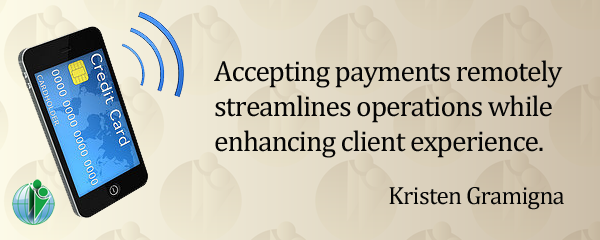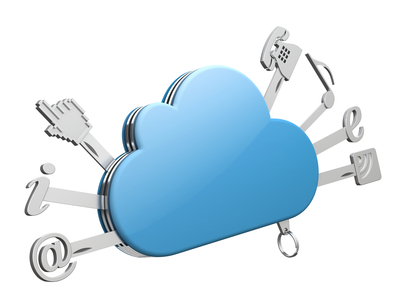3 reasons to accept payments remotely
This page may contain links to Amazon.com or other sites from which I may receive commission on purchases you make after clicking on such links. Read my full Disclosure Policy

If you’re like most of the organizers I know, you love your work so much that you’d be happy to do it even if you weren’t getting paid. Unfortunately, happiness won’t pay the bills!
These days we have more options than ever for issuing invoices and getting paid, and today we welcome Kristen Gramigna with information about mobile payments.

For self employed professional organizers and productivity consultants accepting payments remotely can be a mutually beneficial payment tool that streamlines operations, while enhancing client experience. Here are just three of the reasons your business model can benefit from tools like mobile payments:
Your business model aligns with your customer’s banking habits.
The ability to cultivate customer-perceived value is a key component to sustaining a healthy business model. Not only does perceived value allow you to build a unique brand image in the marketplace that separates you from competitors — it puts you in control of what you can command for your services, versus forcing you to be reactive to market demands and fluctuations.
As marketing research has long suggested, “value includes quality, price, and convenience — where convenience is the time and effort expended by customers.” Though such factors are a matter of customer perception, you can enhance the likelihood that you a build a convenient business model by adapting your processes to those that consumers already rely on — including remote payment options.
Consider a recent study by The Federal Reserve: It revealed that 61 percent of American consumers now own smartphones, and that more than half used those devices for mobile banking in the last year — a number that is expected to increase steadily over time. When your business accepts payments remotely, your invoicing practices fit seamlessly into your audience’s existing banking habits, demonstrating that you understand and value their needs, and in turn, offer services that complement them.
You can reduce expenses.
According to reduce.org, the hard costs associated with basic paper supplies cost a business 31 times the cost of purchasing it, given the costs associated with equipment needed to print, distribute and store hard copy data — along with basic paper waste. The Institute of Management and Administration estimates that the average business spends about $3 to $5 to produce a paper invoice.
Accepting payments remotely can eliminate paper-based invoices completely for the clients who don’t wish to receive them, and can help you gain efficiencies in the amount of time your business invests in issuing and collecting invoices. Additionally, when you accept payments remotely with a mobile payment processor, the entire transaction is made electronic. Proof of purchase receipts are delivered to the client by email or text based on preference, and your record of the transaction is stored electronically with your mobile payment processor.
Funds owed when a customer pays by credit or debit card are transferred into your business bank account upon transaction approval, usually within 72 hours —eliminating the need to physically collect the payment in order to deposit customer checks.
Increased cash flow.
Accounts receivables (AR) are essentially mini-business loans made to clients until they pay for services rendered. Although average AR small-business timelines can vary from a few days to 90 days and beyond, waiting any amount of time for clients to pay presents costs to your business.
In the sense of opportunity cost, waiting to receive customer payment may mean struggling with limited cash flow and/or lose the ability to invest in business growth through marketing efforts. Additionally, there’s the risk that you’ll be forced to turn delinquent invoices over to a collections firm — which ultimately results in lesser payment, if the payment is collected at all. (The Commercial Collection Agency Association reports that the longer an invoice goes unpaid, the lesser the probability a business will receive payment for it.)
By utilizing remote payments, the entire invoicing process can be expedited, regardless of where you or your clients are located, and despite disruptions that tend to slow invoicing operations, including travel schedules and varying workload demands.
When you offer clients the opportunity to pay remotely, you reduce the AR time cycle, and give the customer the option to pay by their preferred method — by credit or debit card.
Original illustration by downloadsource.fr, used under a Creative Commons license




An invaluable article and lucidly written.
It will help people in dire straits like me.